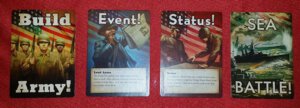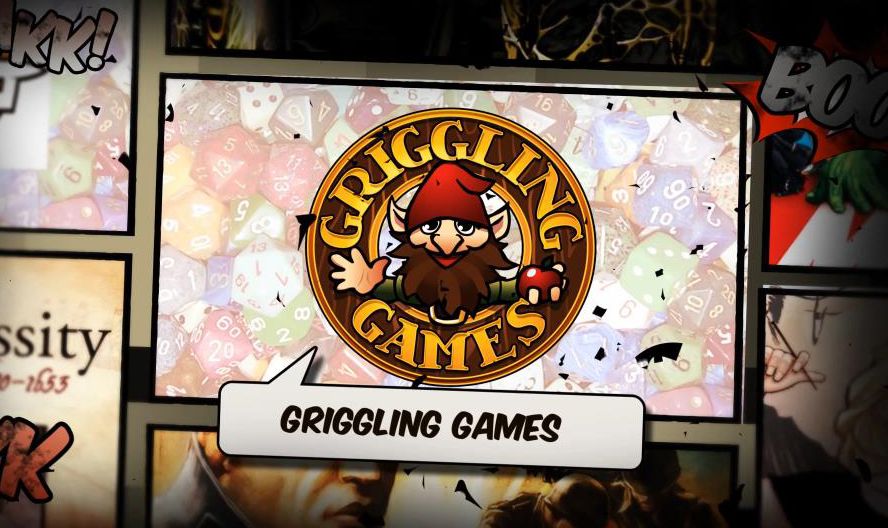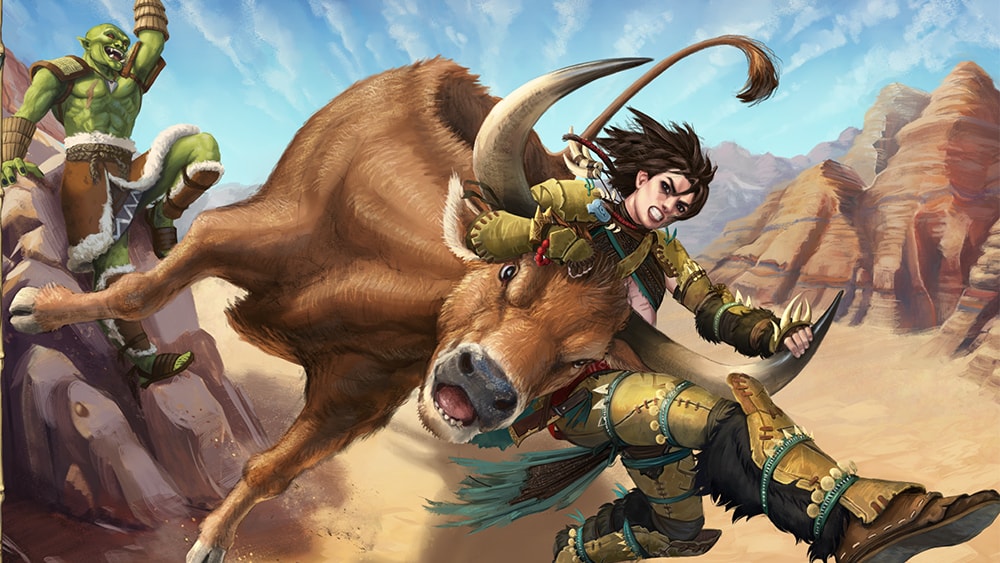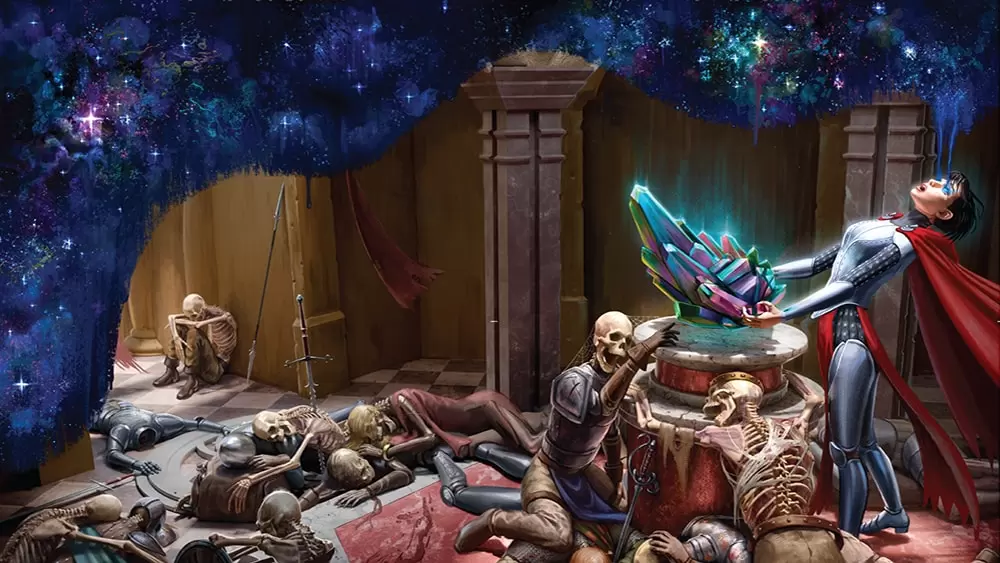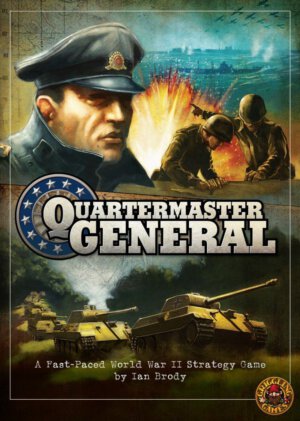
Publisher: Griggling Games
Designer: Ian Brody
Artist: Nicholas Avallone
Year: 2014
Genre: Card driven, area control WWII game
Players: Two to six players
Ages: 12+
Playing Time: 90 minutes or more
MSRP: $49.95
I first heard about Quartermaster General when I initially met Ian Brody and Eddie Rodriguez at the GAMA Trade Show earlier this year. The title they were displaying was Project Neptune but Brody was also very excited about an upcoming World War Two release which Griggling Games didn’t have on hand, Quartermaster General. Following my interview with Eddie Rodriguez at Gen Con I was able to get my hands on both Project Neptune (my review is coming shortly on that title) and Quartermaster General.
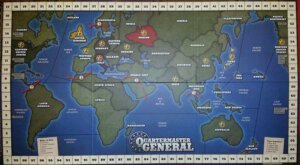
The name of the game in Quartermaster General is supply and this applies not only to the game board and units but in the actual number of cards each of the warring nations begin in their decks. Much of the aim for players in QG will be in both obtaining supply areas for themselves and denying supply to their enemies. Each of the players will have to monitor their deck of cards as well since once a nation runs out of cards there won’t be much they can do in the game (although they aren’t eliminated) and will lose victory points for their side.
Play begins once each nation has placed their initial army in their home country space and ten cards are drawn, three cards discarded, and ending up with a starting hand of seven cards for the player. Then the nations will each play their round in a determined order; Germany take their tunr first while the United States goes last.
The card breakdown includes Build Army, Build Navy, Land Battle, Sea Battle, Event, Status, Response, and Economic Warfare. Building cards are pretty self-explanatory and allows you to place an army in a space adjacent to a supplied piece. Battle cards simply remove an enemy army or navy from a space adjacent to one of your armies or navies. Events provide nation specific occurrences while Status cards create an ongoing benefit for that country which remains in place unless another card removes it. Response cards are played face down and then revealed later if conditions are met; an example would be not losing an army in a specific space if the card indicates that area. Economic Warfare usually forces an opponent to discard cards.
The turn order proceeds as follows:
Play Step – Simply enough a single card is played. This can be a card played directly from your hand or in the case of a Response card, left face down on the table to be used in a later round.
Supply Step – Any units (Army or Navy) which can no longer trace a line of supply for that nation is removed from play. Units cannot trace supply to other nations but only to their home country.
Victory Step – Victory points for the phasing player’s team are calculated and applied to the VP track.
Discard Step – The player can discard any cards they wish from their hand. This might not seem like a great idea most of the time because those cards will not be available later and you’re just exhausting the supply.
Draw Step – The player draws back up to seven cards in hand.
Each round continues along with each nation playing a card, or possibly activating an already placed Response card, and hoping they have an opportunity to remove an opponent’s army or navy to break a line of supply. That’s about it in summation as there’s never any real clash of steel or seesaw battles to create tension or even excitement. QG comes across more as a Euro flavored experiment about logistics as opposed to a white knuckled model of a world shattering event.
Play continues until the end of twenty rounds or until one side achieves 400 VPs. Victory points are earned by controlling Supply Spaces – two points for a space your country controls and a single point for spaces controlled by a nation on your team. Some cards also provide extra VPs as well. If the game didn’t end with either the Axis or Allies reaching the VP threshold then whoever has the most VPs is declared the winner once you’ve played the twenty rounds.
I have to say I found some of the aspects of QG to be pretty interesting, such as the nation’s decks containing different numbers of cards and those cards representing the country’s resources, and the game plays easily enough once you grasp the rules. Where I have an issue with QG is the fact that after playing through the title three times, I found the overall experience to be pretty boring. I wasn’t the only one, as everyone I played QG with didn’t find the game to be much to write home about either. Part of the problem is due to your resources and available actions being tied into your deck of cards. Want to build an army but don’t have a card which will let you? You’re out of luck. Care to destroy a nearby navy but can’t play a Sea Battle card? Sssoooorrrryyyy… Most of the time you’ll just be eliminating enemy units by knocking out their chain of supply rather than actually doing battle with their forces. One of my fellow gamers asked, “When do we get to bust out some real strategy here rather than spending turn after turn laying down cards we *might* use?”
Sad to say my biggest issue with QG, as was the case with some of those who played it with me, is you don’t really feel like this is a WWII game. Sure, the combatants are there and some Events and Status cards add a bit of historical flavor but a game of this sort should provide an “epicness” to the proceedings and QG doesn’t pull that off; QG is too abstracted, and victory points are too tied into just controlling starred spaces on a board, to ever give the players a sense they’re calling the shots of massive war machines locked in a life or death struggle around the world. One thing a game modeling a global conflict should never be is dull!
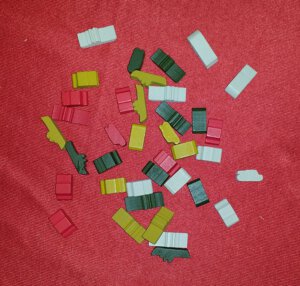
While I give kudos to the gang at Griggling for putting together such a good presentation, and both Ian and Eddie are really nice guys so I wish their company all the success in the world, I can’t really recommend adding Quartermaster General to your gaming collection.
[rwp-review id=”0″]
- Outcast Silver Raiders Slipcase Set Reviewed - Nov 24, 2024
- Store Your Polyhedrals in the Dungeons & Dragons Demilich Dice Holder from Diamond Select Toys - Nov 24, 2024
- Battlezoo: Eldamon for 5E Reviewed - Nov 23, 2024


